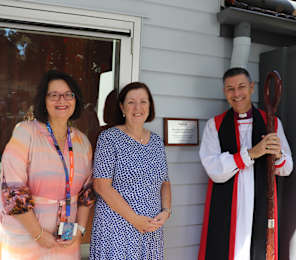The peak bodies and major providers have made a last-ditch attempt to force the Government’s hand on funding before Christmas, calling on the Prime Minister, Health Minister and Aged Care Minister to deliver a swift injection of cash into the sector in the Mid-Year Economic and Fiscal Outlook (MYEFO) or face up to 50,000 beds in strife in the New Year.
The group – Aged and Community Services Australia (ACSA), Anglicare Australia, Baptist Care Australia, Catholic Health Australia, Leading Age Services Australia (LASA), The Aged Care Guild and UnitingCare Australia – say without further investment, aged care homes – and their home care services – will shut their doors in the next twelve months.
“With around 50 per cent of facilities operating at a loss, industry analysis suggests that there are nearly 200 providers with up to 50,000 beds at an unacceptably high level of financial risk,” the group said in a statement.
“Around 15 per cent of providers have reported that they may need to close services in the next 12 months if circumstances do not improve.”
They says while the Government’s commitment to 10,000 new Home Care Packages, reducing chemical restraints and moving younger people out of residential care is commendable, these areas are “only the tip of the iceberg” – and the package is insufficient to support those entering residential care today.
Will their push be successful?
While there is no question the funding is needed, the Government has so far ignored the blanket requests for funding from the peaks.
In the Interim Report, the Commissioners also refused to back a significant increase to aged care funding before the release of their Final Report in November 2020.
“These interventions are essentially variations on a theme which has haunted this area of government policy for far too long: short-term solutions which will at best temporarily stave off the worst problems and, at worst, produce another set of unintended outcomes requiring further inquiries and reviews and further injections of public funds without addressing the underlying causal factors,” they wrote.
But what if that emergency funding was directed towards a particular purpose – namely, the aged care workforce?
Yesterday, I received an email from a CFO with nearly 30 years’ experience currently working with a regional provider.
He says while funding is at a critical level thanks to years of Government underfunding and recent decreases in interest rates which have reduced RAD and DAP income, where they have been hit hardest is in their staffing.
“What we have found in the past 12-18 months is that there are very few applicants applying for a position with us,” he said.
“Most of our RNs are from overseas (we cannot get any suitable ones) , cannot get ENs at all, and the pool of AINs applying for a role has dried up and is virtually non-existent.”
Approaching their local TAFE and apprenticeship centre to offer 10 trainee carer (Certificate III) positions, they were advised there was no government funding to run such a program – because they have run it several times in the past with reasonable success.
While aged care staff have historically been paid 3-9% less than the hospital sector, he says their biggest challenge is now the NDIS.
“Aged care workers are required to have a Cert 3 in education, NDIS workers nothing, just a 3-day orientation,” he said.
“Our aged care workers (AINs) are paid $23.87 per hour, NDIS $27 to $29 per hour. This is 17% less. Aged care work is confronting and demanding. Staff get hit and abused by residents on a regular basis. And they get paid significantly less than NDIS workers. Their work is significantly undervalued, including by the Royal Commission and the report they titled “Neglect”. Everyone that works in the industry has been tarred with this brush, despite the vast majority doing a fantastic job under difficult conditions. What would attract a carer to work in aged care at present? I cannot think of a reason.”
His solution?
The Government to commit to boosting the wages of aged care workers by 15% now – with providers paying 15% above the current employment agreement or award rates and signing an agreement with the unions to that effect.
It’s a valid argument.
Certainly, it is a stop-gap measure – a longer-term solution would need to be devised later.
As the Royal Commission has identified, there is a clear need for further training, better career paths, higher wages and more value placed on the job done by care workers.
But if we are talking about the viability of the sector for the next 12 months – and the care of frail and vulnerable residents – it should be considered as an interim measure until the Royal Commission comes through with its recommendations.
We all want an aged care system that meets the needs of older Australians – but if there are no staff to support them, there is no system.
What are your thoughts?









